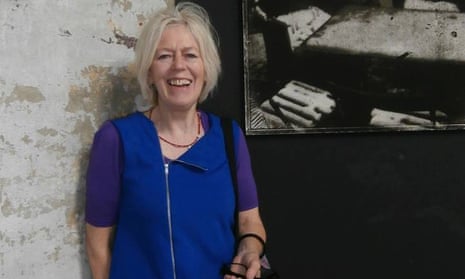Sue Steward was an authority on Latin and world music in Britain and a champion of women artists. Affectionately known as La Reina or La Stewarda, Steward, who has died aged 70 after a brain haemorrhage, was also a widely travelled author and journalist who worked for many titles – including the Guardian – a broadcaster and an adventurous club DJ.
Her first job in the music industry, in the mail order department of Richard Branson’s Virgin records store in Notting Hill Gate, marked a change in direction from her degree in botany, zoology and chemistry and first teaching post. When Branson decided to start a record label, Sue became press officer, working closely with the big names of the 70s. She helped promote Mike Oldfield’s best-selling 1973 album Tubular Bells, and toured with Captain Beefheart and the experimental rock band Henry Cow. Later she worked with Malcolm McLaren and the Sex Pistols, and in another change of direction became office manager for Friends of the Earth.
She had broad and adventurous musical tastes, and her fascination with Latin styles was inspired in part by her friendship with the composer, musician and writer David Toop. He played her recordings by the Fania All-Stars and the bass player Israel Cachao López, and she was hooked. She sought out Latin stars such as Celia Cruz, expanded her knowledge of the artists and repertoire, and began writing. In 1981 she was a co-founder with Toop of Collusion magazine, which covered music of all genres. Later in the 80s she began writing on Latin music for the influential magazine Straight No Chaser.
Sue was keen to promote Latin and other world styles in any way she could. In 1985 she joined a team that included Paul Bradshaw and Gilles Peterson as a DJ for the pirate radio station K-Jazz, which broadcast from a rooftop in Crystal Palace, south London on Sundays. She would arrive at the secret studio with her albums hidden in a shopping trolley to deflect suspicion. Peterson remembers her as “an important influence on the boys. She gave me another direction on culture.” Peterson became known for promoting Latin styles, and 14 years later Sue joined him on a trip to Cuba and wrote the sleeve notes for an album by Danay Suarez, on Peterson’s Brownswood label.
In 1987 she continued her DJ work – this time legally – as a co-founder with Gerry Lyseight and Max Reinhardt of the Mambo Inn club in south London. It became a favourite haunt for fans of jazz, African and Latin styles. Work for television included research for Channel 4’s 1989 music show Big World Cafe. Her first book, written with Sheryl Garratt, Signed, Sealed, Delivered: True Life Stories of Women in Pop Music (1999), was a groundbreaking study of women in music from the 50s to punk.
Sue moved on to New York to continue her research into Latin music. The resulting book, Salsa: Musical Heartbeat of Latin America (1999), became a bible for enthusiasts of the genre. The salsa star Willie Colón began his foreword by saying “it’s going to be hard to explain what salsa really is”, but Sue did so in style, helped by impressive design work that reflected another of her passions – photography.
She had now expanded her activities by becoming arts picture editor at the Daily Telegraph. And though she continued with musical projects, as founding contributing editor on Songlines magazine and working with Michael Nyman on his 2011 film about the bandleader Edmundo Ros, she became increasingly involved in photographic and art projects. She became photography critic for the London Evening Standard, curated events including the New Alchemists exhibition of contemporary photographers at the 2012 London Art Fair, and wrote knowledgably about “outsider” art for the magazine Raw Vision.
In 2009 she dealt poignantly with the subject of photography and the dead in a piece for the Observer, which described how she photographed her mother, Jean, after her death. Sue grew up in the Leicestershire village of Stathern: her father, Francis, worked for a corn merchant and Jean (nee Gray) looked after their two daughters, a son and the home. From Melton Mowbray grammar school she went to the University of Liverpool, where her science degree was, she later remarked, “in retrospect, a very unlikely choice”.
Easygoing and self-effacing, she was a passionate environmentalist. She loved to be by the water, and moved this year to St Leonards-on-Sea, East Sussex.
Sue is survived by her brother, Malcolm, and sister, Alison.
Susan Steward, writer, broadcaster and exhibition curator, born 19 September 1946; died 24 August 2017
- This article was amended on 28 August 2017. Sue Steward grew up in Stathern, and not Strathearn.

Comments (…)
Sign in or create your Guardian account to join the discussion